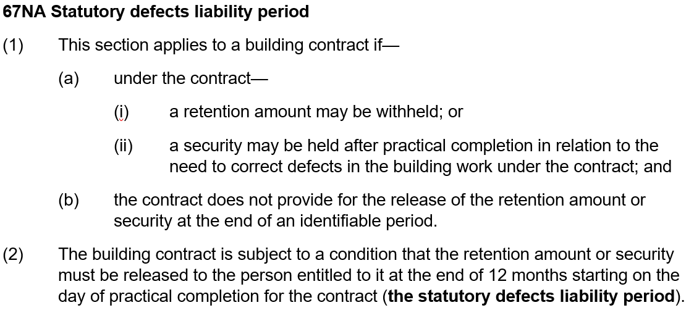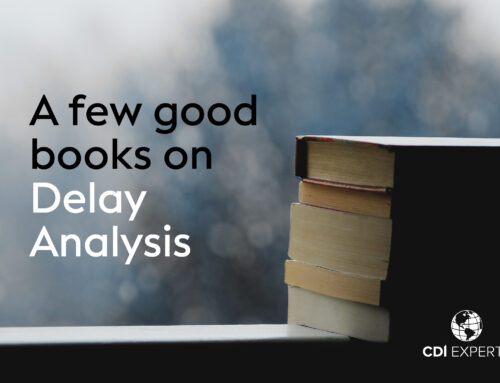Written by
Alexander Tuhtan
Published
8 March 2023
Most standard contracts allow the DLP to be extended by a minimum of 12 months (or longer). Did you know that if contract is not properly amended, the principal can keep the FULL security in that period?
Many contractors don’t think twice before signing up to an Australian Standard series contract (eg. AS4000, AS4902 etc.). This is problematic for two reasons.
First, most principals use heavily amended Australian Standard contracts but often don’t show the amendments on the ‘ready to execute’ version of the document. From my experience, these contracts are so heavily amended that the amendments often exceed the length of the original contract!
Second, the Australian Standard contracts often contain sloppy and ambiguous wording that despite having been in existence for decades, have still not been clarified by the Courts.
One particularly sloppy piece of drafting concerns the defects liability period (DLP) and how it can be extended.
[*SIDE NOTE: if you’re unfamiliar with defects liability periods or how they work, I have prepared a basic explanation at the bottom of this article as a refresher to help you get up to speed.]
Take for example the Australian Standard 4000 series contract which contains the following clause:

In particularly harsh contracts, the first paragraph may be amended as follows:
“During the defects liability period or any separate or extended defects liability period, the Superintendent may give the Contractor a direction to rectify a defect which:”
These eight additional words can have the devastating effect of allowing the principal to extend the DLP by at least 12 months under the standard contract, or years under with the above amendment! How? Well, all the principal has to do is identify a defect during the DLP and state that a separate DLP will apply for that defect.
The problem is that with the above amendments (and a few others not in this article), the principal could wait until the end of the second DLP (about 24 months after practical completion), identify another defect and then state ANOTHER DLP! This process (or what I call, the never-ending DLP) can be repeated until there’s no defects left, but only after several years and multiple DLPs.

A longer DLP, so what?
Some of you may be wondering what the big deal is about a prolonged DLP. After all, you probably would have come back to fix up those defects anyway if you were liable for them.
An extended DLP isn’t necessarily the problem. The biggest problem is that whilst the DLP is being extended year on year, the Principal is entitled to retain the contractor’s final security (which is usually 2.5% of the contract sum).
So, for example, say you’re the contractor on a job worth $10M – which means you’ve handed over $250,000 for the portion of security that is to be released at the end of the DLP. Then, say the principal identifies a chipped tile which costs $250 to fix. Under the standard Australian Standard clause, the principal could hold the entire $250,000 for a further 12 months – even though the defect only cost $250 to fix! With the above amendments, they could withhold the return of the $250,000 even longer.
Aside from not getting your security back, a prolonged DLP can have the following consequences:
-
Until final completion is reached, the contractor will not have an entitlement to make a final progress claim under the Building Industry Fairness (Security of Payment) Act 2017. This can be devastating if the contractor has not claimed (or been paid) for any of the contract works as it will have no option to recover these funds other than to commence proceedings.
- If the form of security is a bank guarantee or insurance bond, then the contractor will incur ongoing costs in servicing the guarantees or bonds.
- The contractor may incur other ongoing expenses in the form of insurances or maintaining project records. For example, some design and construct contracts require the contractor to maintain professional indemnity insurance for a period of 7 years after final completion. If final completion is not achieved for say 3 years because of extensions to the DLP – then the contractor is forced to incur an additional 3 years’ worth of premiums!
Accordingly, stringing out final completion under a contract is often used strategically by principals as leverage to force a settlement with contractors.

Surely this is unlawful!
Unfortunately, no. Parties are usually free to agree to any terms that they wish – no matter how unfair, so long as it does not contravene statutory or civil law
Recently, the Queensland Government attempted to address this issue with the introduction of section 67NA of the Queensland Building and Construction Commission Act 1991 (Qld), which requires that any security under a construction contract that is being withheld for defects is returned within 12 months after practical completion.
Section 67 is extracted in full below:

Sadly, section 67NA doesn’t cure the ‘never-ending DLP problem’ for two reasons.
First, section 67NA only applies to contracts that do “…not provide for the release of the retention amount or security at the end of an identifiable period”. In the Australian Standard base version, if a DLP is extended for the standard period – that’s still 24 months after practical completion! If the unlimited wording is introduced, then there is still always an ‘identifiable period’, being 12 months after the last defect was identified.
Second, section 67NA only applies to contracts where a security is being withheld for defects. Some sophisticated contracts tie the release of security not only to defects, but also to other acts, such as achieving energy or environmental ratings (eg. NABERS). For these contracts, the release of the security is not being withheld for defects and therefore, the better view is that section 67NA does not apply.
So, how do I fix this issue?
Simple! The best way to address the above issue is to include a clause which provides that if a separate DLP is issued, then:
only the value of the defect for which is extended can be retained by the principal; and
the balance of the security must be released at the expiry of the original DLP.
The reality is that there is no real basis for a principal to argue with this type of clause – other than to only offer the works on a ‘take it or leave it’ basis. For contractors who are negotiating up the chain, the main question for you to ask the principal if they push back on this amendment is – “why do you need to keep the entirety of the security during the extended DLP, rather than enough to cover the costs of the defects?”.
Conclusion
Too often, contractors think that just because a contract is an Australian Standard, that it is ‘fair’. Usually, nothing could be further from the truth.
The reality is that most of the commonly used unamended Australian Standards are all at least 20 years old now and not up to protecting contractors in today’s competitive markets.
As a bare minimum, all contractors NEED a contract review procedure which identifies:
- the clauses that you and your project team need to be aware of (e.g. time bars, risk allocation clauses etc.); and
- deal breaker clauses which you should NEVER accept, unless you’re willing to take on all the risk for the job (to be discussed in further articles).
- deal breaker clauses which need to be disputed (e.g. like the ones which are the subject of this article); and
For big ticket jobs, contractors should instruct a specialist construction lawyer (not your regular lawyer) to review the contract for you and identify any problems like the above. Usually, the cost of a review is minuscule compared to the savings in the event of a dispute.
In the context of clauses like those above, a handful of amendments could prevent a never-ending DLP!
Follow us for more!
Get the expert edge
Please add your details below and we’ll be in touch as quickly as possible





